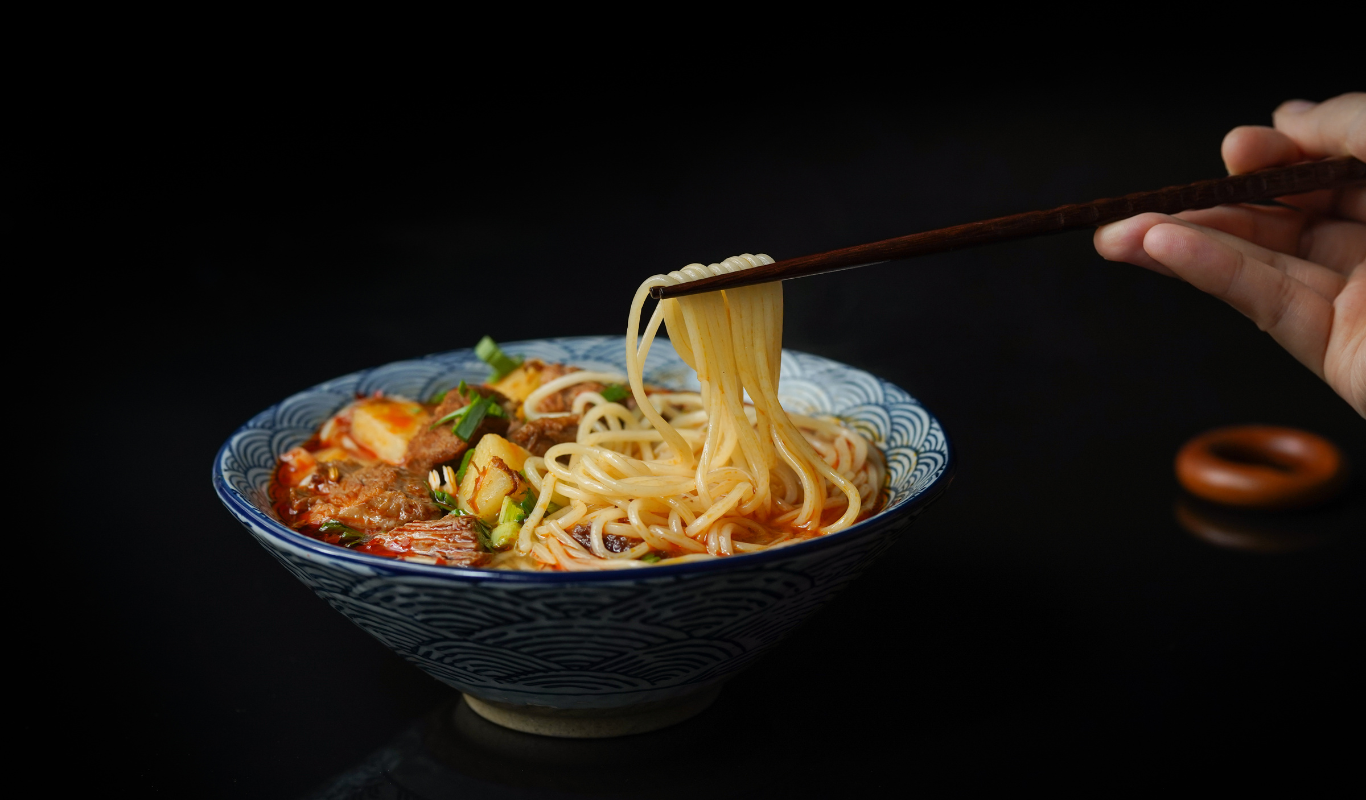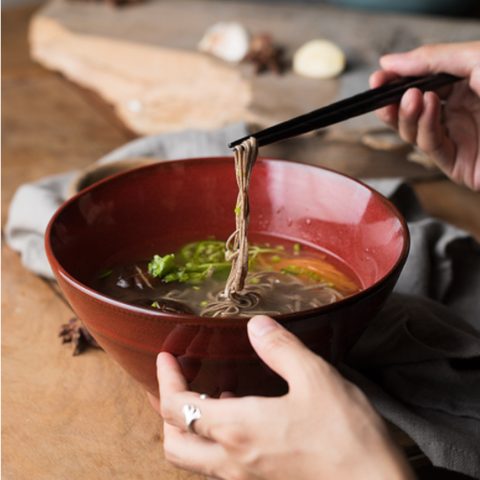
Ramen vs. Soba vs. Udon: Discover the Differences!
Discover the fascinating world of Japanese noodles and learn to distinguish between Ramen, Soba, and Udon like a true connoisseur!
Dive into our comprehensive guide and turn your noodle tasting into a true culinary experience.
If you're a Japanese food lover, you've probably encountered three types of noodles commonly used in Japanese dishes: Ramen, Soba, and Udon . These noodles, which you may have already enjoyed in a bowl of Ramen in Japan, Paris, or elsewhere, are the basis of many delicious and comforting dishes.
In this article, we will delve into the fascinating world of these noodles, compare their characteristics and find out why they have become so popular.
Ramen 
Ramen, often served in a ceramic ramen bowl, is a wheat noodle introduced to Japan by Chinese immigrants in the 19th century. It is characterized by its elastic texture and ability to absorb the flavors of the broth in which it is served.
Did you know that the word "Ramen" literally means "Chinese noodles" in Japanese? This is a testament to the origin of this dish.
Ramen is usually served in a soy, miso, or soy sauce-based broth , and comes with various toppings such as sliced pork, nori seaweed, green onions, and a boiled egg.
The Soba

Soba, unlike ramen, are thin noodles made from buckwheat flour , which gives them a darker color and a more pronounced flavor. They are often served cold with a soy-based dipping sauce, especially in summer, but they can also be served hot in broth.
Buckwheat, the main ingredient in Soba, is highly valued for its nutritional properties: it is rich in protein, fiber and minerals .
Udon

Udon are the thickest of the three types of noodles. They are made from wheat flour and have a soft, slightly chewy texture. Udon are often served in a soy sauce-based broth and garnished with chives and grated ginger.
They can also be stir-fried and served with various toppings. Udon are known for being very filling due to their size, but they are also very digestible.
Comparison and contrast between different preparations
So, how do you choose between a bowl of ramen, a serving of soba, or a plate of udon?
Each type of noodle has its own unique qualities. Ramen, with its rich flavor and elastic texture, is perfect for a comforting and satisfying meal.
Soba, with its buckwheat flavor and versatility, is ideal for a light and nutritious meal .
And udon, with their size and softness, are perfect for those looking for a simple but satisfying meal . When choosing between these three noodles, consider your preferences in terms of flavor and texture, but also the type of meal you are looking for.
The importance of the bowl

Just as important as choosing the noodle is choosing the bowl in which it is served. A large ramen bowl , whether made of porcelain, ceramic, or another material, is essential for properly presenting and enjoying these noodle dishes.
Indeed, the depth of the bowl allows the broth to stay hot longer , while its wide opening allows for the noodles and their toppings to be arranged in an aesthetically pleasing way . Moreover, it is not uncommon to see Ramen sets, consisting of bowls, chopsticks and spoons, offered as gifts in Japan.
They are all delicious!
Whether you're a fan of Ramen, Soba, or Udon, one thing is for sure: these delicious and unique Japanese noodles have earned their place in the hearts (and stomachs) of foodies around the world.
So the next time you find yourself in front of a Japanese restaurant menu or the shelves of your favorite Asian food store, don't hesitate to try something new. And who knows? Maybe you'll discover your new favorite noodle!
No matter what noodle you choose, make sure you enjoy it in a proper ramen bowl for an authentic experience. And if you don't have one yet, Japan At Home offers a wide selection of ceramic ramen bowls , ramen sets, and all the tableware you need to enjoy these delicious noodles.
So, are you ready to dive into the captivating world of Japanese noodles?


